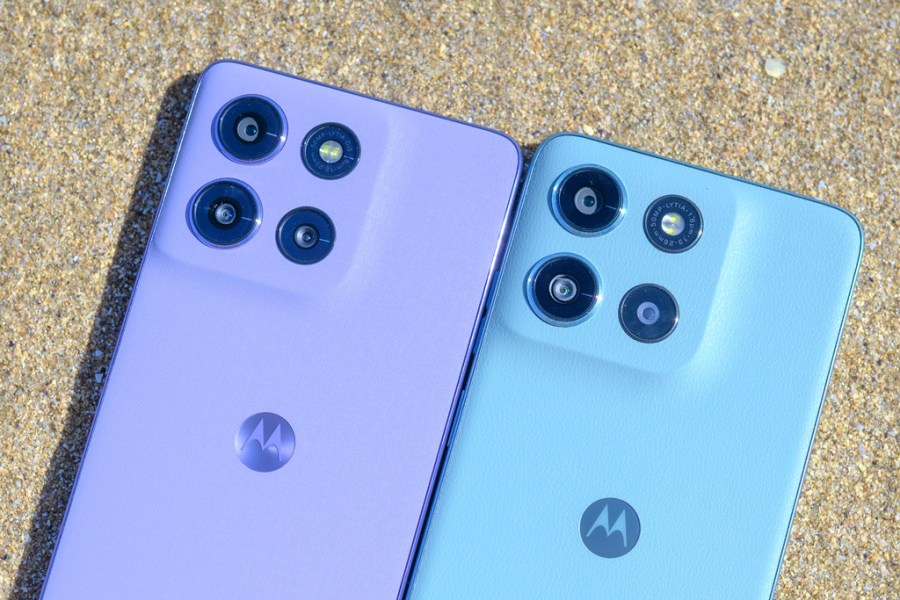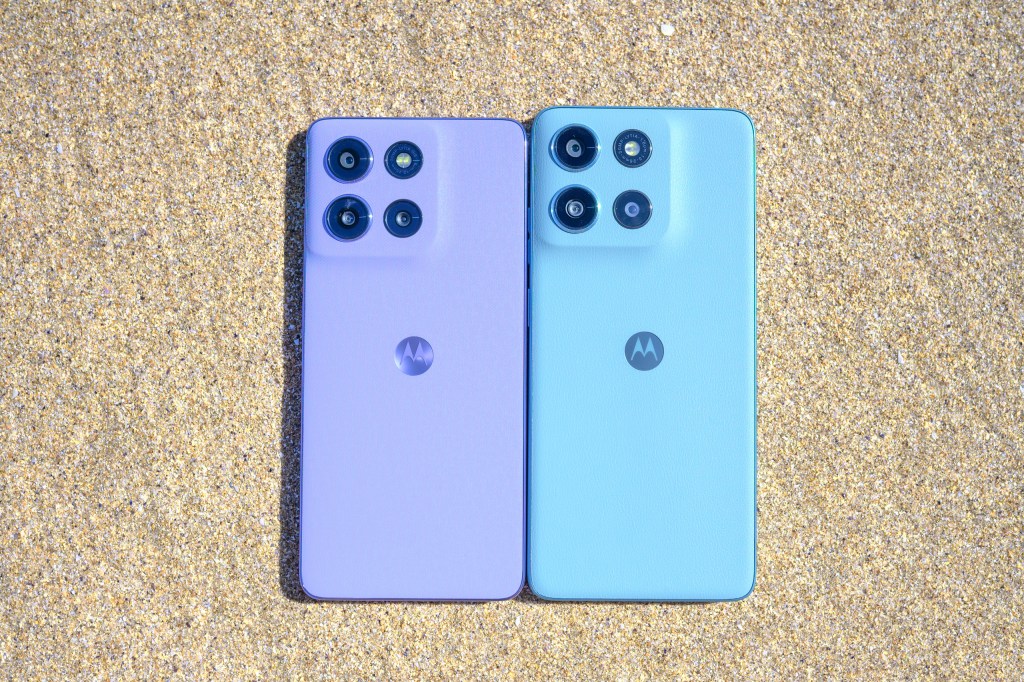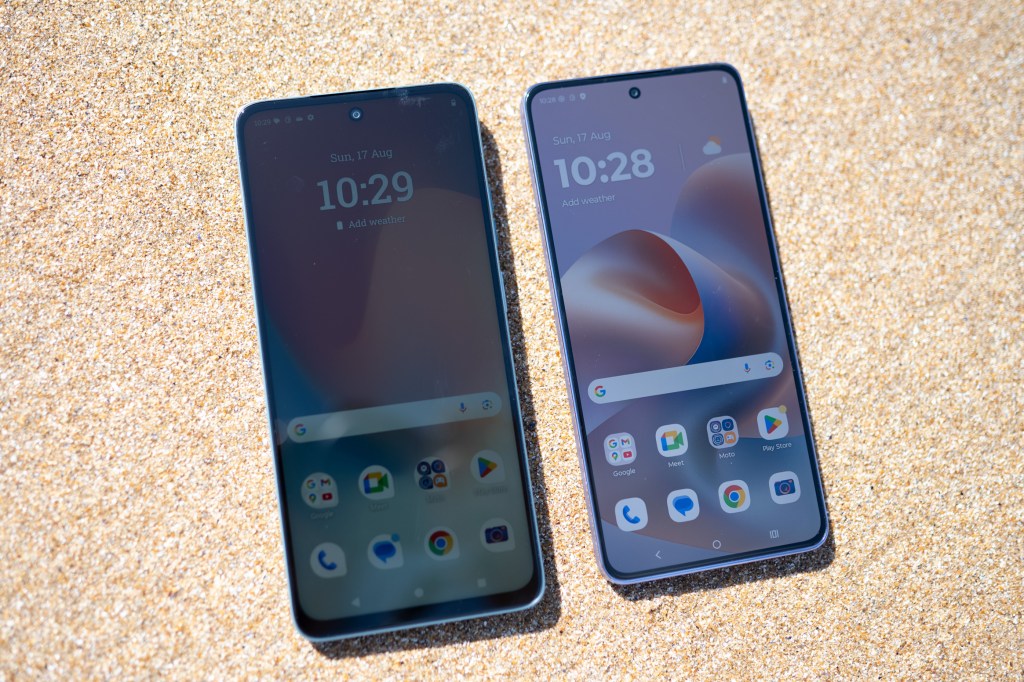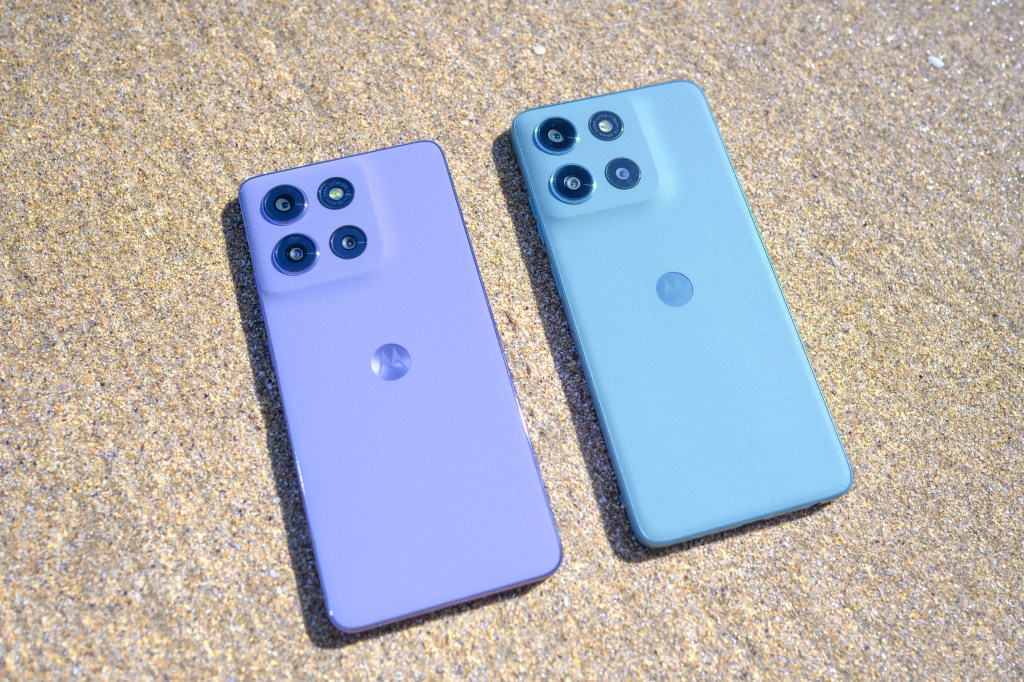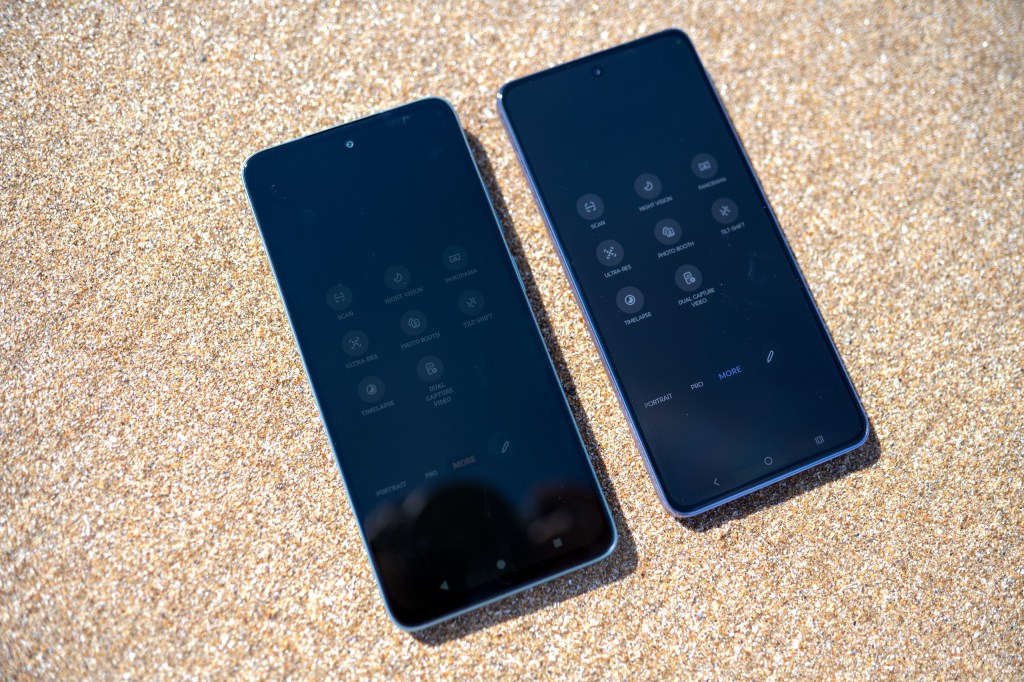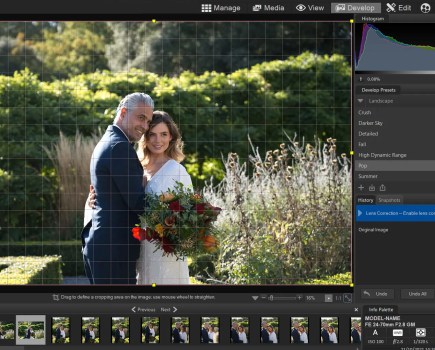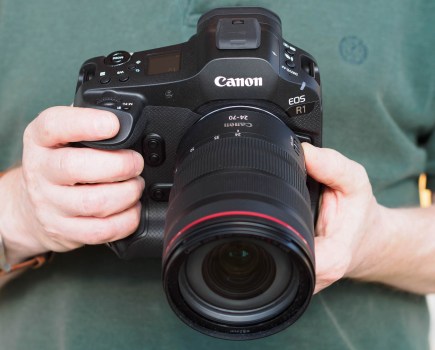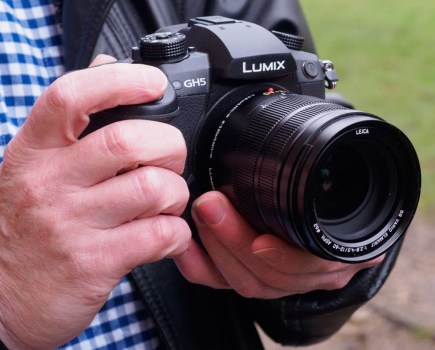Motorola’s affordable G86 and G56 camera phones go head to head in Motorola’s budget line-up, offering solid performance at wallet-friendly prices. The G56 is the entry-level option at £199, while the G86 costs only £50 more and adds appealing refinements, like OIS (optical Image stabilisation) and an ultra-wide and macro camera. Both are appealing options within the budget camera phones on the market, so let’s see how good their cameras fare when put to the test.
Moto G86 vs Moto G56 – At a glance
| Moto G86 | Moto G56 | |
|---|---|---|
| Main cameras | 50MP, f/1.8 26mm equivalent, Quad PDAF, OIS main camera with 10x digital zoom 8MP, f/2.2 13mm equivalent, AF, ultra-wide and macro | 50MP, f/1.8 26mm equivalent, Quad PDAF main camera with 8x digital zoom 8MP, f/2.2 13mm equivalent, AF, ultra-wide and macro |
| Selfie camera | 32MP, f/2.2 22mm equivalent selfie camera | 32MP f/2.2 22mm equivalent selfie camera |
| Video | 4K UHD 60p main (4K30p others) | FullHD 60p |
| Screen | 6.67inch screen, 4500nits (peak), 120Hz, HD pOLED, Corning Gorilla Glass 7i | 6.72inch Full HD+ LCD screen, Corning Gorilla Glass 7i |
| Battery | 5200mAh, 30W fast charging | 5200mAh, 30W fast charging |
| Dimensions | 161.21 x 74.74 x 7.87 mm, 185g | 165.75 x 76.26 x 8.35mm, 200g |
| Storage | 512GB up to 1TB MicroSD extendable | 256GB up to 2TB MicroSD extendable |
| Processor | MediaTek Dimensity 7300 | MediaTek Dimensity 7060 |
Moto G86 vs Moto G56 – Design and hardware
The G56 has a slightly taller 6.72” screen, but with a lower screen-to-body ratio, which results in a thick bezel on the bottom. The G86 features a 6.67” screen and a thick but evenly spaced bezel that makes its screen look more balanced. It also has a higher resolution display, able to showcase more detailed and sharper images.
The G56 is the heavier device at 7.05 oz/200g, while the G86 weighs 6.53oz/185g. Even though the G56 is the taller and heavier of the two, the G86 has a moderately slimmer body measuring 7.8mm, with the G56 measuring 8.35mm.
To keep manufacturing costs lower, the G56 is designed with a more affordable LCD (Liquid Crystal Display) screen. Their downside, however, is lower contrast, with blacks never appearing truly black. On the other hand, they do tend to be more durable and energy efficient than their OLED counterparts. Generally, LCD screens can be brighter; despite this, I found that the G86’s pOLED screen was brighter in almost every scenario. Rated at 4500nits peak brightness, it coped with bright sunlight very well. A benefit of pOLED over LCD is better contrast and more vibrant and accurate colour reproduction, and unlike LCDs, they can achieve true black.
Regarding battery size and charging, both phones are equipped with a 5200mAh battery, with 30W wired charging. If you like the features of the G86 but want to get even more out of a single charge, the Moto G86 Power offers a 6720mAh battery and identical camera specs to the G86.
Audio is backed by stereo Dolby Atmos speakers, with the G56 flaunting a 3.5 mm jack connection for headphones (quite rare nowadays) while the G86 relies on USB-C and Bluetooth. Storage is expandable up to 2TB from the base 256GB on the G56, while the G86 caps storage extension at 1TB from the base storage of 512GB.
Moto G86 vs Moto G56 – Camera setup
The G56 and G86 at first glance share the same camera setup. Both feature a 50MP main Sony Lytia 600 sensor with f/1.8 aperture and Quad Pixel technology, producing 12MP images. Both have an 8MP ultra-wide camera and a 32MP selfie camera. But, when you look at other details, like autofocus, stabilisation and video performance, there is quite a bit more to the G86.
In the G86 with Macro Vision and autofocus on board for the ultra-wide 8MP camera, you can get really close to your subject. Additionally, the G86 includes optical image stabilisation (OIS) on the main camera, improving general image quality, low-light performance, as well as zoomed-in shots. Video quality on the G56 is limited to HD only, while the G86 offers 4K 60p recording supported by gyro-EIS stabilisation on both the main and selfie cameras, which helps to stabilise your footage and counter camera shake.
Both phones crop into the main sensor to achieve zoom in the absence of a telephoto unit, with the G56 offering up to 8x and the G86 up to 10x digital zoom. This is a very marginal difference, as you will see from the samples later on. Camera apps on either of them are near-stock Android with the same modes, apart from the Macro mode offered as part of the main Photo mode on the G86.
Moto G86 vs Moto G56 – Image quality
I’ve used both phones in the same situations to directly compare how their camera units tackle the same lighting conditions. Use the sliders to compare the results; the G86 is always on the left, the G56 is always on the right.
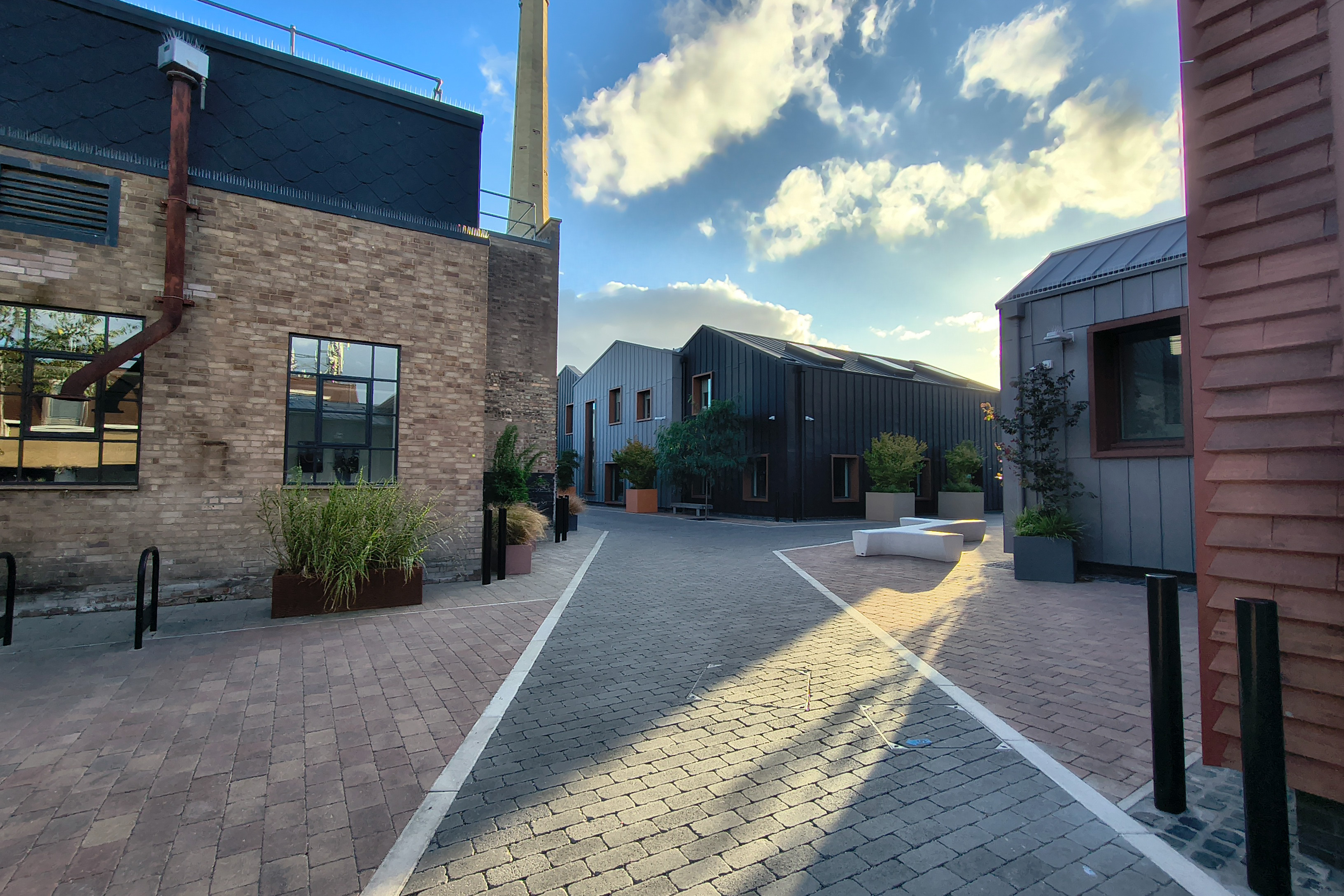
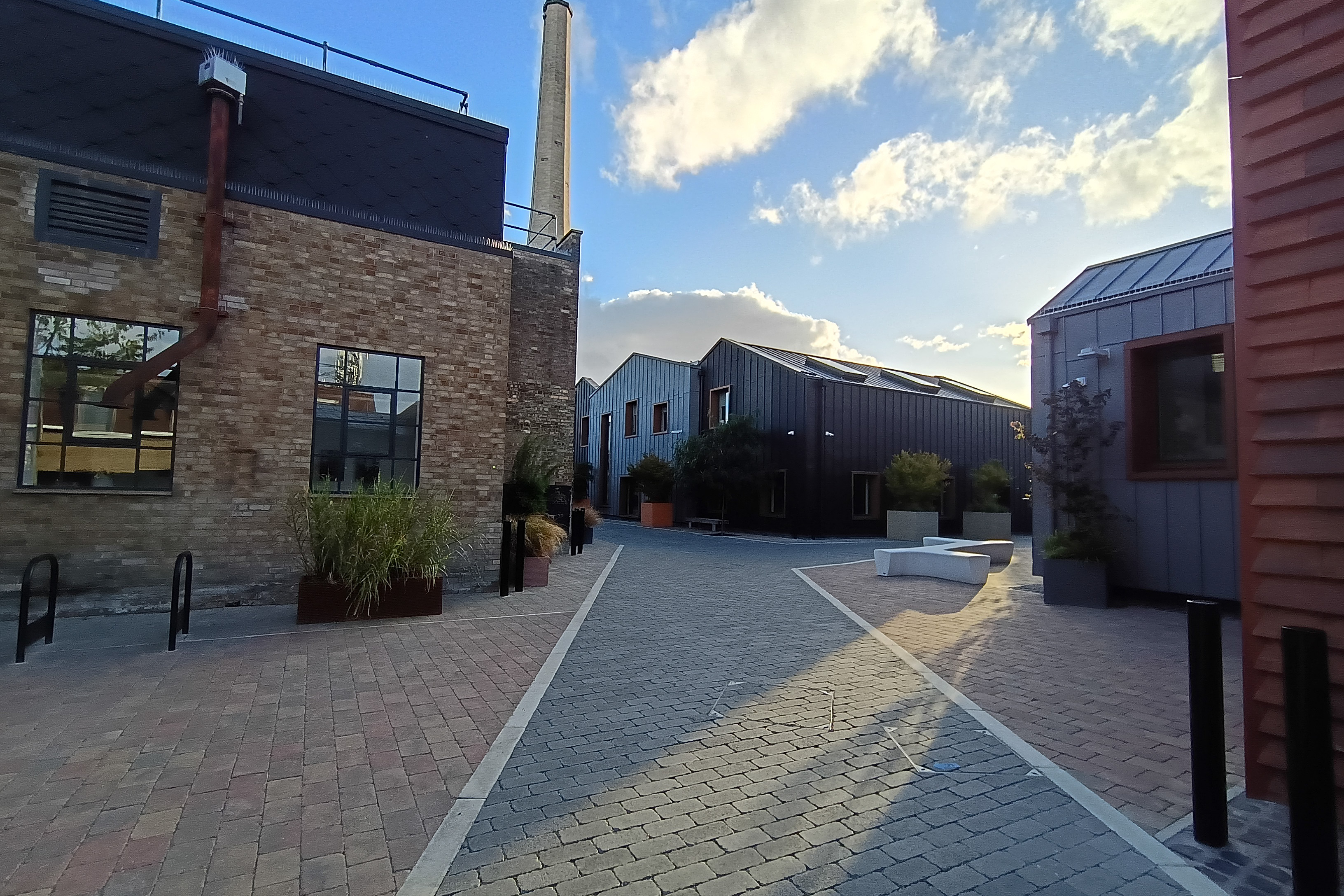
Even if both phones have an 8MP ultra-wide unit, it is apparent that the added autofocus to the ultra-wide and macro lens on the G86 produces sharper results, with more detail in general. HDR was automatically switched on, and it retained more detail in the shadows than the G56. Worth noting that the G56 runs on a MediaTek Dimensity 7060 processor rather than the 7300 version found in the G86. This means they will handle image processing differently too, with noise reduction, sharpening and HDR stacking looking more refined.


Images from the 1x lens backed by the main 50MP sensor are more closely matched, but the G86 leads here too, partly because of the optical stabilisation and the aforementioned processor differences. There’s more detail overall, and better HDR performance. The 2x lens shows the same tendency on both phones, as it uses the same sensor and crops in digitally to create the zoomed image.


At 4x digital zoom, images are acceptable when zoomed in on a scene that is relatively close to you, but when it’s used on a more open scene, Motorola’s Photo Enhancement Engine, run by Motorola’s proprietary AI system, Moto AI, creates odd textures that make the results look strange. This is even more apparent at 10x and 8x digital zoom below.


For the dedicated macro mode, the G86 uses the ultra-wide 0.5x lens, equipped with autofocus and Macro Vision that lets you focus up close. Here, the G56 with its fixed focus ultra-wide 0.5x lens can’t compete at all. Using the 4x zoom, which crops from the G56’s main sensor, I framed the same shot for comparison. You can get similar-looking and usable shots from the G56, but the G86 preserved more detail and achieved better sharpness, whether I’ve used its dedicated macro option and got really close or opted for the 4x digital zoom, which benefits from OIS steadying your shots.
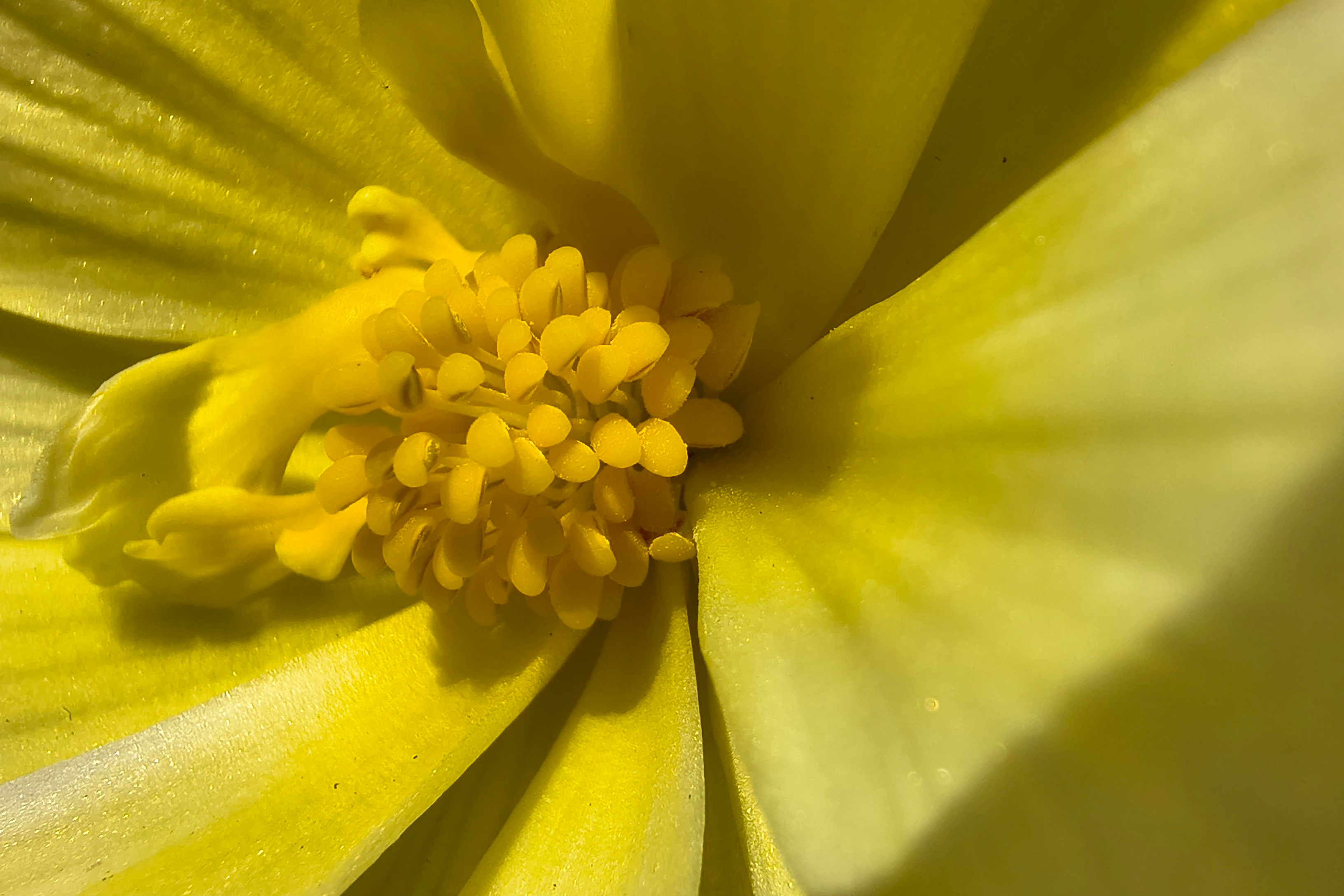
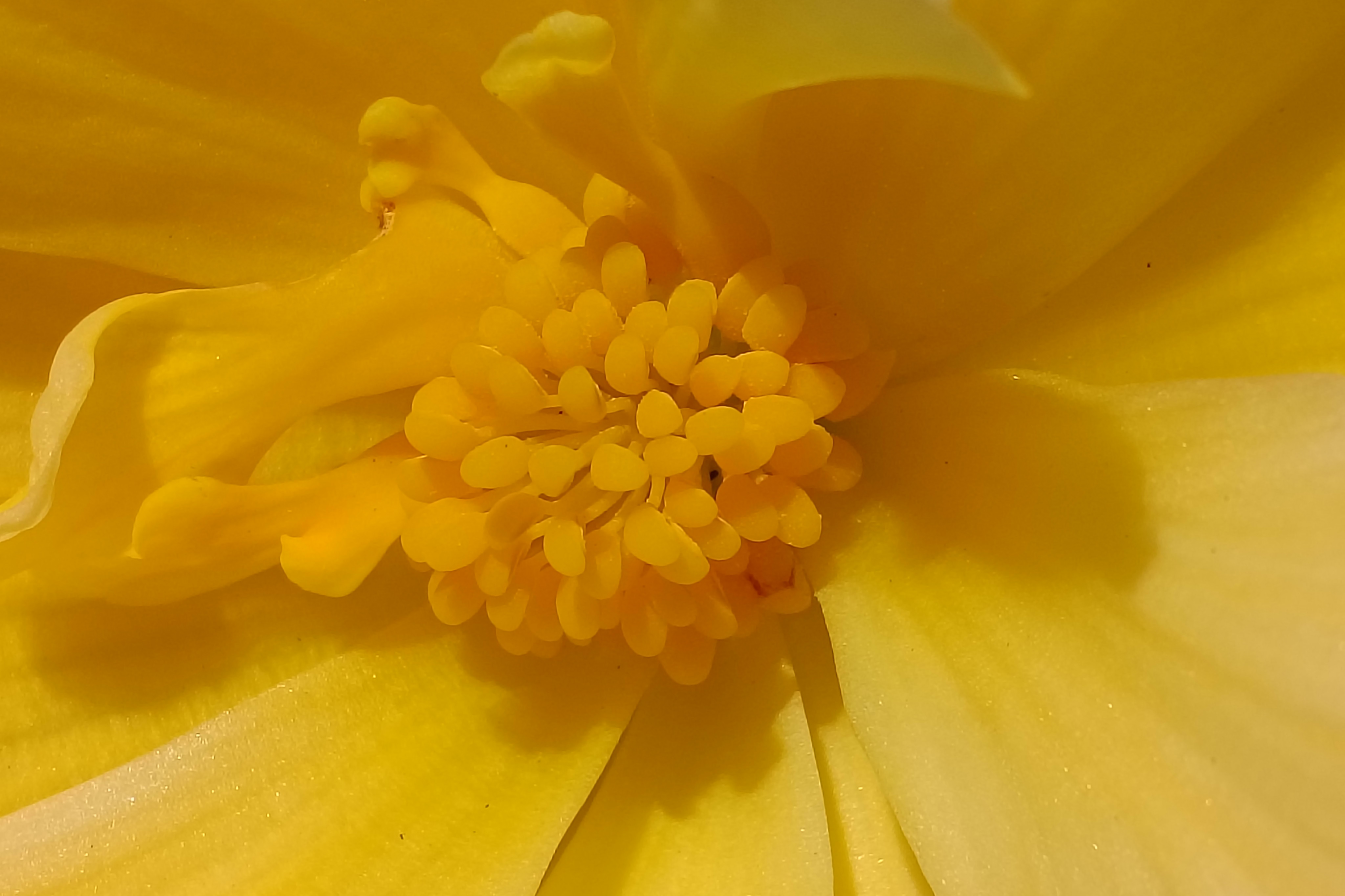
Portrait mode uses the main 50MP camera. When met with well-defined edges ,the separation between the subject and background is really good, but with the bokeh slider pushed to its maximum, both struggle to separate the subject and background seamlessly. This can be avoided by dialling down the bokeh effect a few steps, and the falloff appears more seamless.


Selfies are backed by the 32MP front camera with no autofocus on either model. Overall, both phones yield usable results, with the G56 producing selfies on the softer side, with skin looking quite smoothed out. The G86 uses the same sensor, but the results are sharper and more detailed.


Moto G86 vs Moto G56 – Verdict
Both the Moto G56 and Moto G86 prove that Motorola knows how to deliver value in the budget market. The G56 shines as the more affordable option, covering the essentials with a solid main camera and expandable storage up to 2TB at just £199. The G86, however, justifies its higher price with meaningful upgrades like OIS, dedicated macro mode, and stronger video features, making it a more versatile tool for everyday photography.
If cost is your top priority, the G56 is still an excellent choice. But for just £50 more, the G86 offers a noticeable step up in imaging performance — a worthwhile investment for anyone who wants more flexibility without leaving the budget category. The only problem, is limited availability in the US.
Related reading:
- Moto G56 full review – affordable, durable, expandable
- Moto G86 full review – budget phone for the casual snapper
- Motorola Edge 50 Pro review: quality middle ground?

